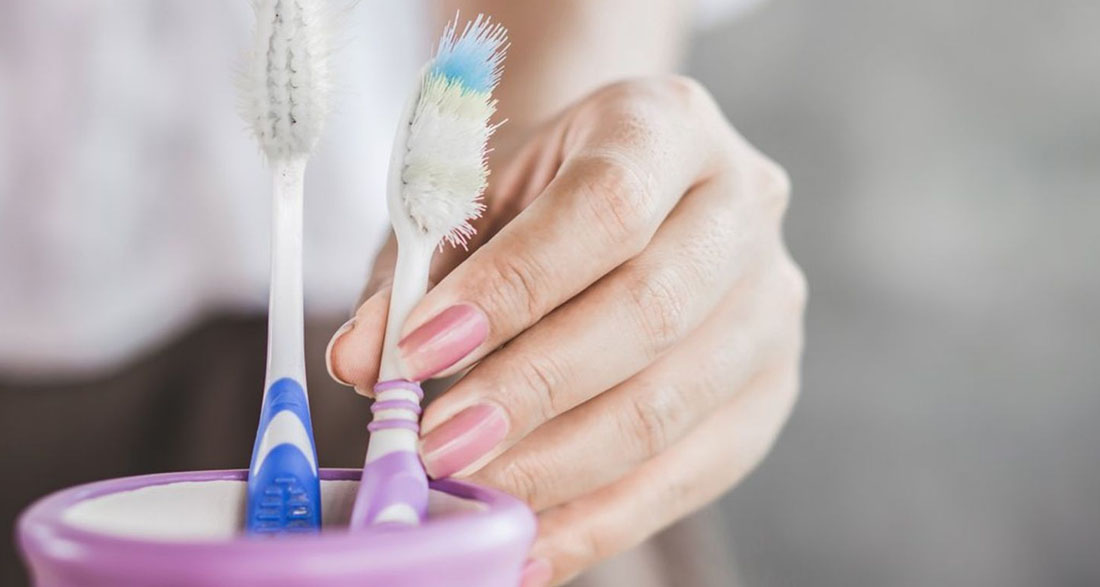The toothbrush is our daily companion – but how hygienic is it really? A dentist provides answers.
Brushing our teeth is a small yet crucial part of our daily routine – in the morning after our first coffee and in the evening before bed. We scrub and rinse, trusting our toothbrush to do its job. But is it actually clean itself? Day after day, toothpaste residue, bacteria, and saliva accumulate on the bristles, turning the toothbrush into a potential germ haven. In an interview with the news agency spot on news, dentist Dr. Julia Thome explains how much care a toothbrush really needs, when it’s time to replace it, and whether electric toothbrushes are truly the better choice.
Should we clean our toothbrush after every use?
Dr. Julia Thome: It is recommended to thoroughly rinse the toothbrush under warm water before and after use. This removes food particles and toothpaste residue. Ideally, the brush should only be used when it’s dry. If necessary, consider using a second toothbrush.
It is also advisable to wash your hands before brushing your teeth to prevent bacteria from transferring from your fingers to the brush. For those who want to be extra thorough, soaking the toothbrush in antibacterial mouthwash for 10 to 15 minutes once a week can help. However, toothbrushes will never be completely germ-free – but that’s not a problem from a dental perspective. A small number of bacteria won’t harm a healthy immune system.
What is the best way to store toothbrushes?
Dr. Thome: Storing a wet toothbrush in a case or bathroom cabinet is not recommended, as moisture and darkness promote bacterial growth. Instead, let the brush dry upright in a cup. Speaking of cups – these also accumulate dirt over time and should be cleaned regularly, for example, in the dishwasher.
How often should toothbrushes or electric toothbrush heads be replaced?
Dr. Thome: A toothbrush should be replaced every two to three months at the latest – whether it’s a manual brush or an electric toothbrush head. If you have a cold, it’s best to replace it immediately afterward to prevent reinfection.
How do you know when it’s time to replace your toothbrush?
Dr. Thome: Whether it’s an electric toothbrush head or a manual toothbrush, the bristles wear out and fray over time. When that happens, plaque removal becomes much less effective, so it’s definitely time for a new one.
What are the advantages of electric toothbrushes compared to manual ones?
Dr. Thome: Electric toothbrushes remove plaque gently but thoroughly. While manual brushing is relatively slow, electric toothbrushes operate at high speeds thanks to their motorized brush heads. Oscillating toothbrushes can easily achieve 3,000 rotations per minute, while sonic toothbrushes – the second common category – reach up to 30,000 vibrations per minute. This power makes a difference: studies confirm that electric toothbrushes remove more plaque, bacteria, and buildup in the same amount of time compared to manual brushing.
This also benefits interdental spaces. Many dentists recommend electric toothbrushes, particularly for patients with exposed tooth roots or gum issues. However, proper use is key: excessive pressure or aggressive scrubbing can damage teeth and enamel.
What are the downsides of electric toothbrushes?
Dr. Thome: Even electric toothbrushes have their weaknesses. Regular tests by Stiftung Warentest show significant quality differences in performance and cleaning effectiveness. Incorrect use can cause gum injuries, damage tooth roots, and lead to gum recession. This is especially true for rotating-oscillating models with round brush heads that press directly onto the teeth. Sonic toothbrushes, on the other hand, pose less risk because their high-frequency vibrations require minimal pressure.
Even the best electric toothbrush cannot effectively clean between the teeth, where cavities often develop. That’s why dental floss and interdental brushes are essential. It’s important to use them correctly: floss should be gently moved up and down rather than forcefully dragged back and forth, as that can damage the gums and enamel.
Can you extend the lifespan of a toothbrush?
Dr. Thome: No, because even the best toothbrush won’t last forever with regular use. It should be replaced every three months at the latest. Even slightly worn bristles fail to provide thorough oral hygiene.
Dr. Julia Thome is a dentist at Kölner Carree Dental in Cologne. Her areas of expertise include functional diagnostics/therapy and root canal treatments.






